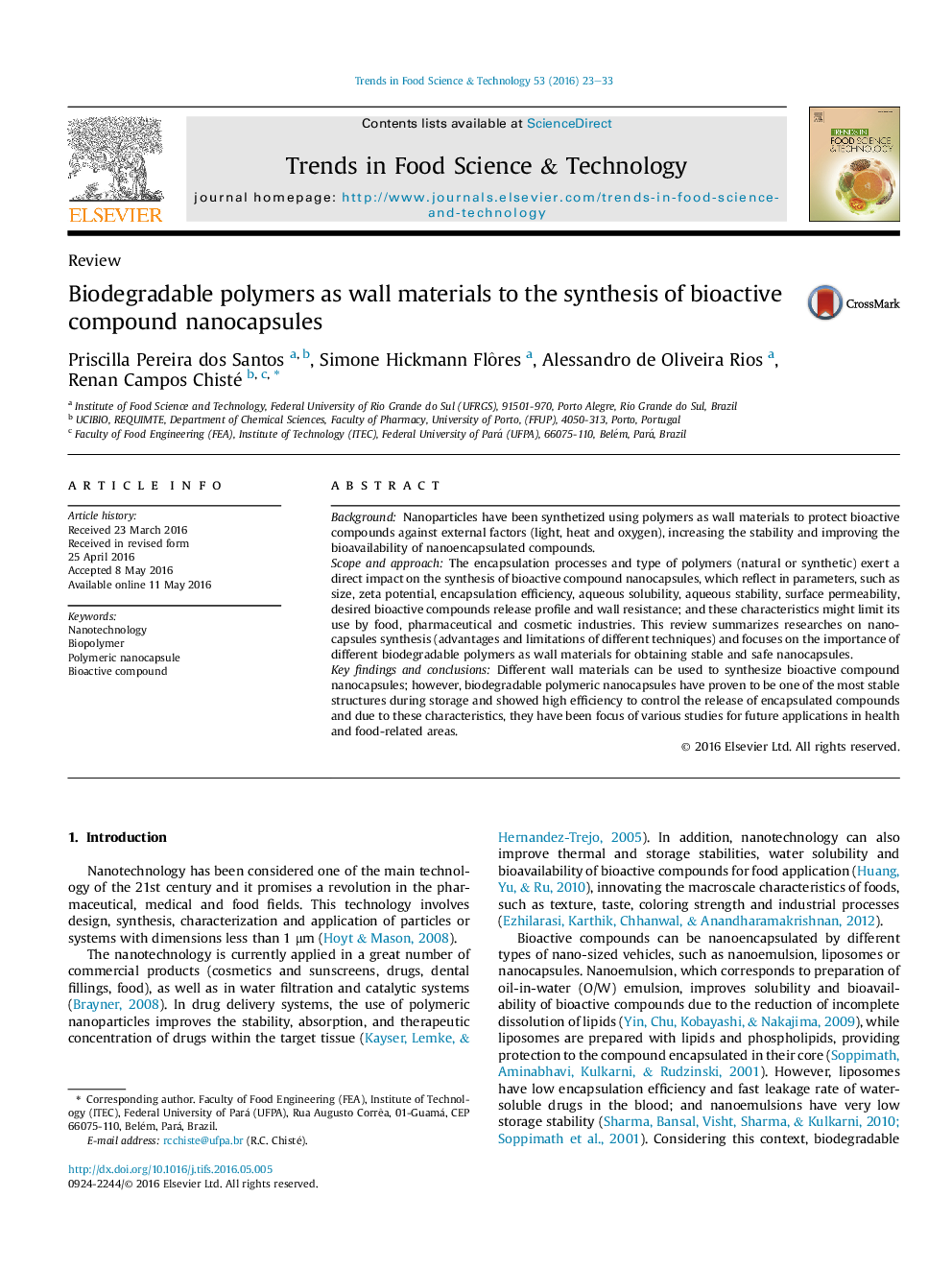| Article ID | Journal | Published Year | Pages | File Type |
|---|---|---|---|---|
| 2098436 | Trends in Food Science & Technology | 2016 | 11 Pages |
•Nanoparticles improve stability and bioavailability of nanoencapsulated compounds.•Biopolymers are used as wall materials to synthesize polymeric nanoparticles.•The choice of wall material is important to achieve specific purposes.•Different techniques of synthesis will change the nanocapsule characteristics.
BackgroundNanoparticles have been synthetized using polymers as wall materials to protect bioactive compounds against external factors (light, heat and oxygen), increasing the stability and improving the bioavailability of nanoencapsulated compounds.Scope and approachThe encapsulation processes and type of polymers (natural or synthetic) exert a direct impact on the synthesis of bioactive compound nanocapsules, which reflect in parameters, such as size, zeta potential, encapsulation efficiency, aqueous solubility, aqueous stability, surface permeability, desired bioactive compounds release profile and wall resistance; and these characteristics might limit its use by food, pharmaceutical and cosmetic industries. This review summarizes researches on nanocapsules synthesis (advantages and limitations of different techniques) and focuses on the importance of different biodegradable polymers as wall materials for obtaining stable and safe nanocapsules.Key findings and conclusionsDifferent wall materials can be used to synthesize bioactive compound nanocapsules; however, biodegradable polymeric nanocapsules have proven to be one of the most stable structures during storage and showed high efficiency to control the release of encapsulated compounds and due to these characteristics, they have been focus of various studies for future applications in health and food-related areas.
